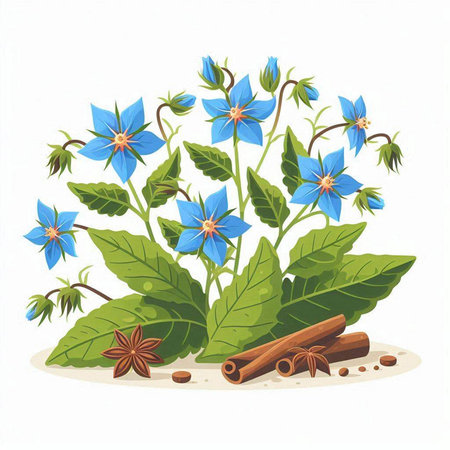Introduction to Easy-care Seasonal Flowers in India
India, with its vibrant culture and diverse climate zones, offers an exciting canvas for home gardeners who wish to enjoy colourful seasonal flowers throughout the year. For many Indian families, gardening is not just a hobby but a cherished tradition that brings communities together—whether on balconies in Mumbai apartments or in sprawling gardens of Delhi homes. If you’re keen to add charm to your living space without too much fuss, easy-care seasonal blooms are the perfect answer. These resilient flowers thrive in the varied Indian climates, from the humid coasts of Kerala to the dry heat of Rajasthan, making them ideal for beginners and seasoned gardeners alike. In this guide, we’ll explore popular seasonal flowers that are well-suited for Indian conditions and share practical tips rooted in local gardening practices, so you can enjoy a blooming home garden with minimal effort and maximum joy.
2. Popular Easy-care Flower Varieties for Indian Gardens
When it comes to easy-care seasonal flowers in India, several varieties stand out for their resilience, adaptability, and minimal maintenance needs. These flowers are well-suited to the Indian climate and can thrive in home gardens, balconies, or even small urban spaces. Let’s look at some of the most beloved choices among Indian gardeners:
Marigold (Tagetes)
Known locally as “Genda,” marigolds are a staple in Indian gardens due to their vibrant colors and religious significance. They bloom throughout the year, especially during festivals like Diwali and Dussehra. Marigolds require little care apart from regular watering and thrive in full sunlight.
Zinnia
Zinnias add a burst of color to gardens with their daisy-like appearance. They are heat-tolerant, disease-resistant, and ideal for beginners. Zinnias need direct sunlight and moderate watering, making them perfect for both rural and urban settings.
Vinca (Periwinkle)
Locally called “Sadabahar,” vinca is admired for its continuous blooming and ability to withstand hot, dry conditions. It grows well in almost any soil and requires very little attention, except occasional watering during extreme heat.
Comparison Table: Easy-care Flowers for Indian Gardens
| Flower Variety | Local Name | Main Blooming Season | Light Requirement | Watering Needs |
|---|---|---|---|---|
| Marigold | Genda | Year-round (esp. Oct-Mar) | Full Sunlight | Moderate |
| Zinnia | – | Summer & Monsoon | Full Sunlight | Moderate |
| Vinca (Periwinkle) | Sadabahar | All Seasons | Partial/Full Sunlight | Low-Moderate |
Why Choose These Varieties?
The above flowers are not just popular; they also bring cultural value to many Indian households. Their minimal care requirements make them excellent choices for busy families or first-time gardeners looking to brighten up their spaces without much hassle. Whether you are planning a traditional rangoli border with marigolds or adding zinnias to your terrace pots, these varieties ensure beauty with ease.

3. Growing Guide: Key Tips for Planting and Care
For Indian gardeners, understanding your local climate and soil is the first step towards a thriving seasonal flower bed. Here are some practical tips, crafted especially for our diverse Indian regions.
Soil Preparation
Most easy-care seasonal flowers in India, such as marigold (genda), zinnia, and cosmos, prefer well-drained loamy soil. If you are gardening in the North or Central India, enrich your soil with organic compost or well-rotted cow dung, which is readily available at local markets. In South India, where the soil can be clayey, mix in sand or cocopeat to improve drainage.
Watering
Indian summers can be intense! Water early in the morning or late evening to prevent evaporation. For cities like Chennai or Mumbai with high humidity, water less frequently but deeply. In drier regions like Rajasthan or Gujarat, keep an eye on soil moisture and increase watering frequency as needed. Always check the topsoil; if it feels dry to touch, its time to water.
Sunlight Requirements
Seasonal flowers generally need at least 5-6 hours of direct sunlight daily. In hot regions such as Delhi or Hyderabad during peak summer, provide afternoon shade using green netting (available at most local nurseries) to protect delicate blooms from scorching sun.
Pest Management
Common pests like aphids or mealybugs can trouble your garden. Neem oil spray (neem ka tel), a popular organic solution in India, works wonders and is safe for pollinators like bees and butterflies. Encourage natural predators by planting basil (tulsi) nearby. For fungal issues due to monsoon humidity, sprinkle wood ash or use fungicide recommended by your local nursery.
Local Tip:
Always talk to fellow gardeners in your area—what works in Kerala may not suit Punjab! Community advice often leads to better results than generic instructions.
4. Season-wise Flower Choices in India
India’s diverse climate means you can enjoy different easy-care flowers throughout the year. By choosing the right seasonal flowers, your garden or balcony will always be vibrant and lively. Let’s explore the best options for summer, monsoon, and winter, along with popular local examples.
Best Seasonal Flowers by Indian Climate
| Season | Recommended Flowers | Local Names & Notes |
|---|---|---|
| Summer (March–June) | Marigold, Zinnia, Portulaca, Sunflower, Balsam | Marigold (Genda), Zinnia (Zinniya), Portulaca (Naupatia), Sunflower (Surajmukhi), Balsam (Gulmehendi); Tolerate heat and need less water |
| Monsoon (July–September) | Torenia, Cosmos, Rain Lily, Gomphrena, Hibiscus | Torenia (Wishbone flower), Cosmos (Cosmos), Rain Lily (Safed Musli), Gomphrena (Globe Amaranth), Hibiscus (Gudhal); Thrive in humidity and rain |
| Winter (October–February) | Pansy, Petunia, Calendula, Sweet Pea, Dahlia | Pansy (Banafsha), Petunia (Petuniya), Calendula (Genda phool), Sweet Pea (Mithi matar), Dahlia; Enjoy cool weather and bright sunshine |
Tips for Choosing Seasonal Flowers in India
- Select native or locally adapted varieties: These require less care and are more resistant to pests and diseases.
- Plan your planting: Sow seeds at the start of each season for best results.
- Consider sunlight needs: Most summer flowers love full sun, while some monsoon and winter flowers prefer partial shade.
- Mix annuals and perennials: This ensures continuous blooms across seasons.
Selecting season-wise flowers not only adds colour but also supports pollinators like bees and butterflies. Next time you visit your local nursery or garden shop, ask for these popular varieties using their Indian names—shopkeepers will love it!
5. Community Wisdom: Traditional Indian Practices & Local Tips
In Indian gardening, community wisdom has always played a significant role. Beyond books and online guides, many gardeners rely on folk knowledge passed down through generations. Here are some traditional practices and neighbourly tips that can help your easy-care seasonal flowers thrive across different parts of India.
Using Panchagavya for Natural Growth
Panchagavya, a time-honoured organic mixture made from cow products, is often recommended by experienced gardeners in rural India. This natural tonic is believed to boost plant immunity and enhance flowering. Mix a diluted solution and spray it once every two weeks on your flower beds for healthier plants with more blooms.
Moon Calendar Planting
Many seasoned gardeners in India still follow the lunar calendar when sowing seeds or transplanting saplings. It is said that planting during the waxing moon phase encourages robust growth and better yields. Ask your elders or local gardening groups for guidance on the best lunar dates for specific seasonal flowers like marigold or cosmos.
Neem as a Natural Pest Repellent
Using neem leaves or oil is an age-old trick to keep pests at bay without chemicals. Sprinkle crushed neem leaves around young plants or spray diluted neem oil on flower foliage. This not only protects your blooms but also keeps your garden eco-friendly.
Neighbourly Seed Exchange
A cherished tradition in Indian communities is exchanging seeds and saplings with neighbours. This practice promotes diversity in home gardens and ensures you get seeds adapted to local climates. Don’t hesitate to ask fellow gardeners about their favourite easy-care seasonal flowers—you might discover new varieties perfect for your region.
Water Conservation Tips
With water scarcity being common in many parts of India, local wisdom suggests watering early in the morning or late evening to reduce evaporation. Using clay pots (matkas) buried near plant roots helps retain moisture longer, ensuring your seasonal flowers stay hydrated even during hot summers.
By blending these traditional Indian practices and friendly neighbourhood advice into your gardening routine, you not only foster beautiful, easy-care seasonal flowers but also celebrate the collective spirit that makes Indian gardens so unique.
6. Common Challenges and Easy Solutions
While growing seasonal flowers in India is a rewarding experience, gardeners often face unique challenges due to the country’s diverse climate. Here are some frequent issues and practical solutions suited to Indian conditions.
Dealing with Intense Heat
India’s summers can be extremely hot, especially in northern and central regions. Many easy-care flowers like marigold and zinnia are heat-tolerant, but even they can suffer in peak summer months.
Easy Tips:
- Watering: Water plants early in the morning or late evening to reduce evaporation.
- Mulching: Use dried leaves, straw, or coconut husk to retain soil moisture and keep roots cool.
- Shade: Provide temporary shade with green nets or old sarees during severe heat waves.
Managing Heavy Rainfall
The monsoon season brings heavy rains to many parts of India, which can cause root rot and fungal diseases in flowering plants like petunias and cosmos.
Easy Tips:
- Soil Drainage: Always use well-draining soil mixes. Add sand or cocopeat for better drainage.
- Pots & Placement: Move potted plants under shelter during heavy rains if possible.
- Avoid Overwatering: Check soil moisture before watering; only water when the top inch feels dry.
Pest Control the Indian Way
Pests such as aphids, mealybugs, and caterpillars are common across India. Instead of harsh chemicals, try these eco-friendly methods popular among Indian gardeners.
Easy Tips:
- Neem Oil Spray: Mix 5 ml neem oil with 1 litre water and a few drops of liquid soap. Spray on affected plants every week.
- Hand Picking: Remove visible pests by hand early in the morning when they are sluggish.
- Companion Planting: Grow marigolds alongside other flowers to naturally repel many insects.
Community Wisdom
If you’re unsure about a particular problem, join your local gardening group (many exist on WhatsApp or Facebook) where fellow Indian gardeners share region-specific advice and quick fixes. Remember, most issues have simple solutions—just keep observing your garden closely!
7. Conclusion: Bringing Colours to Indian Homes
Embracing easy-care seasonal flowers is a wonderful way to bring vibrant colours and positive energy into Indian homes. Whether you live in the bustling streets of Mumbai, the peaceful lanes of Kerala, or anywhere across our diverse country, these flowers can thrive with minimal effort and add a festive touch to any space. Gardening is not just about growing plants; it’s about nurturing life and connecting with our roots. By choosing low-maintenance seasonal blooms like marigold, zinnia, or petunia, even beginners can experience the joy of gardening without feeling overwhelmed.
Don’t hesitate to start small—perhaps with a few pots on your balcony or a corner patch in your courtyard. You will soon find that tending to these flowers is therapeutic and rewarding. Remember, gardening in India has always been a community affair. Share your progress with friends and family, ask for tips from neighbours, and join local gardening groups or online forums where fellow enthusiasts share their experiences and advice.
As more Indians turn towards easy-care gardening, we create greener spaces and foster a sense of togetherness. So go ahead—pick up some seeds or saplings at your local nursery, get your hands dirty, and watch as your home transforms with every new bloom. Happy gardening!

